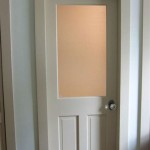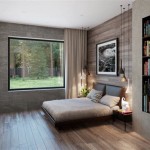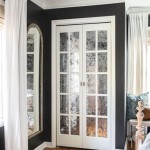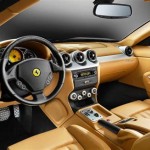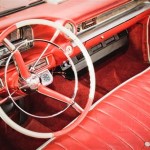Modern Bar Interior Design Ideas: Inspiration and Free Printables
The modern bar interior design landscape is characterized by a blend of minimalism, functionality, and aesthetic appeal. Creating a successful bar environment requires careful consideration of spatial planning, lighting, material selection, and decorative elements. This article explores various aspects of modern bar interior design, offering inspiration and highlighting the potential for incorporating free printables to enhance the overall ambiance.
Modern design sensibilities prioritize clean lines, uncluttered spaces, and a focus on natural materials. This translates to bar designs that feature streamlined furniture, exposed structural elements, and a deliberate avoidance of excessive ornamentation. The goal is to create a welcoming and sophisticated environment that encourages patrons to relax and enjoy the bar's offerings.
Key Point 1: Optimizing Space and Layout for Functionality and Flow
Effective spatial planning is fundamental to a successful bar design. The layout should facilitate smooth traffic flow for both staff and customers. Considerations include the placement of the bar itself, seating arrangements, and the location of service areas. A well-designed layout optimizes efficiency for bartenders and servers, while simultaneously providing a comfortable and inviting experience for patrons.
The bar counter is the focal point of the space and requires careful planning. Its dimensions should be proportionate to the overall space, and its height should be comfortable for both serving and customer interaction. Ample storage space is essential behind the bar for bottles, glassware, and other supplies. Adequate workspace should be provided for bartenders to prepare drinks efficiently and maintain a clean and organized environment. The incorporation of under-counter refrigeration and ice storage is crucial for maintaining optimal service speed and drink quality.
Seating arrangements should be diverse to cater to different customer preferences. High-top tables with stools are ideal for casual gatherings and socializing, while lounge areas with comfortable seating are suitable for more relaxed interactions. Booth seating can provide a degree of privacy and intimacy for smaller groups. The strategic placement of seating can also contribute to the overall flow of the space, guiding customers from the entrance to the bar area and beyond.
Consideration should be given to accessibility requirements. Ramps, wider walkways, and accessible seating options ensure that all patrons can enjoy the bar's facilities. This reflects a commitment to inclusivity and customer service.
Back-of-house operations, including storage, kitchen facilities, and restrooms, should be strategically located to minimize disruption to the customer experience. Clear separation between the public and private areas is essential for maintaining a professional and efficient operation.
Key Point 2: The Role of Lighting and Material Selection
Lighting plays a crucial role in shaping the mood and atmosphere of a modern bar. A well-designed lighting scheme can create a welcoming and inviting ambiance, highlighting key architectural features and accentuating the textures and colors of the interior. Layered lighting is often employed, combining ambient, task, and accent lighting to achieve a balanced and visually appealing effect.
Ambient lighting provides the overall illumination of the space. This can be achieved through recessed lighting, pendant lights, or chandeliers. The intensity of ambient lighting should be carefully controlled to avoid creating a harsh or sterile environment. Dimmers are often used to adjust the lighting levels throughout the day, adapting to different times and customer preferences.
Task lighting is focused on specific areas, such as the bar counter and seating areas. Under-cabinet lighting can illuminate the bar counter, providing bartenders with sufficient visibility to prepare drinks efficiently. Table lamps or spotlights can be used to highlight individual tables or seating areas, creating a more intimate and inviting atmosphere.
Accent lighting is used to draw attention to architectural features, artwork, or decorative elements. Spotlights can be used to highlight artwork or sculptures, while LED strip lighting can be used to accentuate architectural details such as columns or arches. The use of colored lighting can also add a touch of drama and visual interest.
Material selection is equally important in creating a modern bar interior. Natural materials such as wood, stone, and metal are often favored for their durability, texture, and aesthetic appeal. Concrete flooring can provide a sleek and modern look, while wood paneling can add warmth and character. Metal accents, such as stainless steel or brass, can be used to create a sophisticated and industrial-chic vibe.
The use of glass and mirrors can also enhance the sense of space and light in a bar. Mirrored backsplashes can reflect light and create the illusion of a larger space, while glass partitions can separate different areas of the bar without obstructing views. The choice of materials should be carefully considered to create a cohesive and visually appealing design that reflects the bar's brand and target audience.
Key Point 3: Incorporating Free Printables and Decorative Elements
While minimalist design often emphasizes simplicity, incorporating carefully chosen decorative elements and, in some cases, free printables can add personality and character to a modern bar interior. These elements can enhance the overall ambiance and contribute to a more memorable customer experience. However, the key is to ensure that these additions complement the overall design aesthetic and avoid creating a cluttered or overwhelming environment.
Artwork, such as paintings, prints, or photographs, can add visual interest and personality to the walls. Abstract art, geometric patterns, or contemporary photography can complement the modern aesthetic. The selection of artwork should be consistent with the bar's overall theme and brand identity. Free printables, such as vintage cocktail recipes, typographic art, or abstract designs, can be framed and displayed to add a unique and cost-effective touch.
Plants and greenery can bring life and vibrancy to a bar interior. Strategically placed plants can soften hard edges, purify the air, and create a more inviting atmosphere. Hanging plants, potted plants, or even a small vertical garden can add a touch of nature to the space. Low-maintenance plants, such as succulents or ferns, are ideal for bar environments. Free printable plant identification guides or botanical illustrations can further enhance the natural theme.
Textural elements, such as patterned wallpaper, textured fabrics, or exposed brick, can add depth and visual interest to the interior. A feature wall with a unique texture can create a focal point in the space. Wallpapers with geometric patterns or subtle textures can add a touch of sophistication. Textured fabrics, such as velvet or leather, can be used for seating upholstery or decorative cushions.
Menu boards and signage can also contribute to the overall aesthetic of the bar. A well-designed menu board can be both functional and visually appealing. Chalkboard menus, digital displays, or printed menus in stylish holders can enhance the bar's brand identity. Free printable menu templates can be customized to reflect the bar's offerings and design aesthetic. Signage should be clear, concise, and consistent with the bar's branding.
Decorative lighting fixtures, such as pendant lights, chandeliers, or sconces, can add a touch of elegance and sophistication. Unique and eye-catching lighting fixtures can create a focal point in the space. The choice of lighting fixtures should be consistent with the overall design aesthetic and complement the other decorative elements. Free printable lighting guides or design inspiration sheets can assist in selecting the appropriate fixtures.
In conclusion, modern bar interior design prioritizes functionality, minimalism, and aesthetic appeal. Thoughtful planning of space, lighting, material choices and carefully selected decorative elements, including opportunites for incorporating free printables, is crucial for creating a welcoming and memorable environment for patrons. The key is to create a cohesive design that reflects the bar's brand, enhances the customer experience, and optimizes operational efficiency.

61 Home Bar Ideas Outstanding Elegant Designs

19 Wet Bar Ideas For A Stylish Functional Home Design Sugar Cloth

Innovative Restaurant Bar Design Ideas To Transform Your Commercial Space Halman Thompson

19 Wet Bar Ideas For A Stylish Functional Home Design Sugar Cloth
35 Outstanding Home Bar Ideas And Designs Renoguide N Renovation Inspiration

19 Wet Bar Ideas For A Stylish Functional Home Design Sugar Cloth

19 Wet Bar Ideas For A Stylish Functional Home Design Sugar Cloth

19 Wet Bar Ideas For A Stylish Functional Home Design Sugar Cloth

19 Wet Bar Ideas For A Stylish Functional Home Design Sugar Cloth

18 Restaurant Bar Design Ideas And Layouts For 2025
Related Posts

